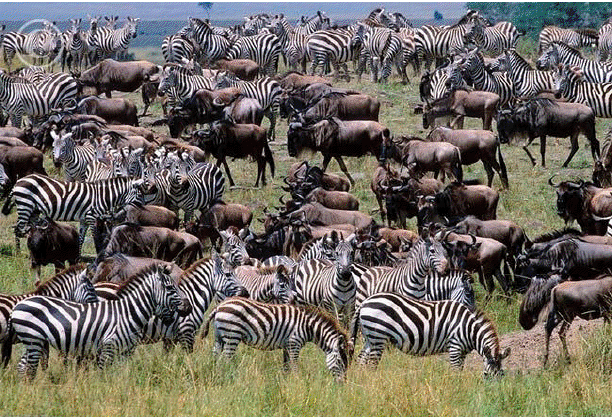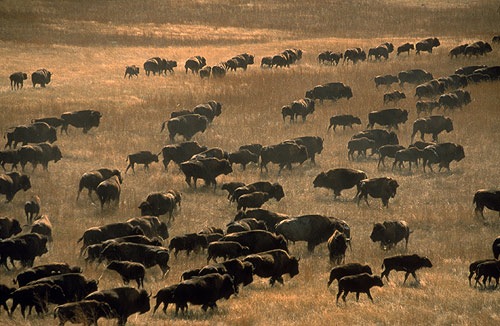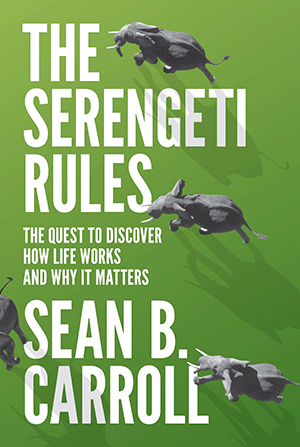Book Review: The Serengeti Rules: The Quest to Discover How Life Works and Why It Matters

The Serengeti Rules: The Quest to Discover How Life Works and Why It Matters by Sean B. Carroll is a great book about nature’s basic rules and contains many valuable insights on desert grasslands. While Carroll didn’t intend to write a book about holistic management, The Serengeti Rules supports holistic insights and practices.

Like the desert Southwest’s desert grasslands, the Serengeti are combinations of grass, savanna and woodlands. These habitats are not static, but continually respond to animal impact, human impact and fire.
Grasses within them grow better when grazed. The fact that plants need animals as much as animals need plants is a basic premise of holistic thought.

Elephants are critical to the systems. They control trees and brush. Until humans arrived in the desert Southwest, there were several elephant type animals and other similar species. As we think through what is and isn’t good for habitats, it’s important to realize that our plants evolved alongside such creatures.

In the Serengeti, the vast herds of migratory wildebeest, like the bison in the desert Southwest, are the keystone species, determining whether we have grassland, brush land or forest. This observation is consistent with the holistic management concept of using cattle herds as a substitute for bison to maintain open grasslands relatively free of brush.
Animal types, animal numbers, predators, grass conditions and associated fires and habitat type are interconnected in the dynamic of “Trophic Cascades.”
Predation by the largest predators doesn’t occur much among animals weighing more than 350 pounds, and almost not at all on thousand-pounders. With the notable exceptions of injured, sick and dying adults, most predation is against young animals.

One of the Serengeti rules is that the presence of suitable prey animals governs the number of predators which in turn governs prey animal numbers. Without either predators or prey, the ecosystem breaks down. Prey species need predation as much as predators need prey, and, plants need both. This is an extremely important point for Texas’ game “managers” who diligently kill every predator they can find, to consider. The natural evidence indicates they’re harming the animals and plants they seek to protect.
The Serengeti Rules, (adapted for the desert Southwest in parentheses):
- Without large numbers of migrating large ruminants, there cannot be healthy ecosystems. (Overrest is as deadly as overgrazing: Quit being mad at cattle, graze large herds, keep the herds moving, and allow long recovery periods.)
- Without predators, no ecosystem is intact. (Quit killing predators, and, reestablish wolves and bear in suitable habitat.)
- Migration helps animal numbers. (Quit fencing animals so wildlife cannot move about; keep domestic herds moving.)
- Carrying capacity is established by the dry season not the wet season. (Our deserts are best grazed in the dormant season with those animals that can be supported at that time.)
- Bigger animals suffer less predation. (Graze our deserts with stockers or dry cows, not calves.)
- Browse eaters survive drought better than grass eaters. (Planned graziers always recognize this and stock according to current grass conditions: Wildlife will do fine so long as that happens.)
- Fire and grazing are what maintain the grasslands. (Periodic fire is natural, but applying fire is extremely difficult today in large part because of long-held community beliefs.)
- Encouraging multiple species, each of which eat something different, is far better than trying to manage for a single species. (A huge mistake across the desert Southwest is scrubbing out all but two or three favorite species rather than building as many as possible. Exotics have a useful role in filling empty niches, because our deserts are missing at least 50 species, eradicated by early humans. The surviving plants need the animal impact they once furnished.)
- Swamps adjoining rivers are the best place for annuals. (Every desert has “xeric riparian areas” including the bottoms of valleys and draws, arroyos, gullies and even eroded roadbeds. These relatively wet zones should be managed with seasonal grazing and water practices that encourage annual weed and grass production.)
- A constant number of animals are unnatural and harmful. Populations must vary according to weather and conditions. (Other than water additions, we harm habitats by maintaining elevated animal numbers through supplemental feeding, predator eradication and other artificial manipulations. Planned graziers always adjust animal numbers as conditions dictate; wildlifers should recognize and accept that nature does this as well.)


